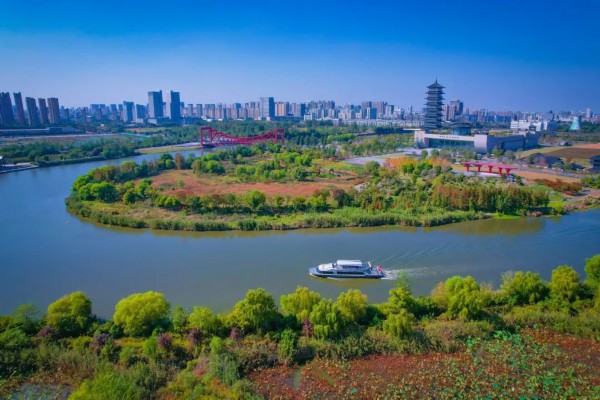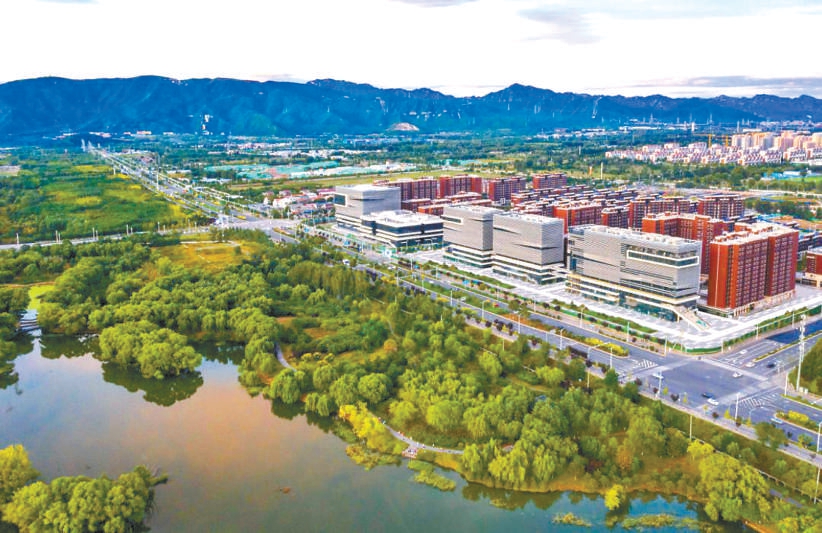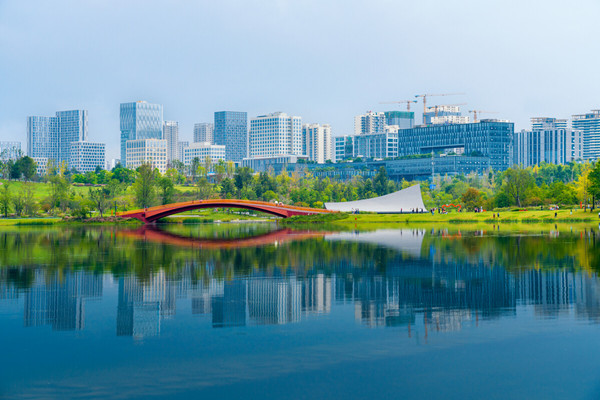Robert Melnick教授訪問北林大研討景觀和遺產保護
4月底,美國保護教育終身成就獎獲得者Prof. Robert Melnick做客北林,展開了關于景觀和遺產保護的交流。Prof. Robert Melnick是俄勒岡大學設計學院的前院長,風景園林系前主任,風景園林系教授,文化景觀研究室主任,美國風景園林師學會會士,歷史景觀保護聯盟的創建者之一,2008年獲美國保護教育委員會NCPE頒發的終生成就獎。
他的研究方向為遺產保護和國家公園保護,是美國和國際知名的文化景觀評價和歷史景觀保護與規劃專家。在文化和歷史景觀遺產保護方面有大量相關理論和實踐著述。他的著述和實踐獲得了大量的國家級獎項。教授《遺產保護設計》《國家公園的歷史和理論》《文化景觀保護》等課程。
Melnick 教授此次訪問,與老師和學生進行了廣泛的交流和討論,進行了一場公開講座:US National Parks: Nature, History, and Challenges for the Future,在園林學院和保護區學院進行了兩場研討會:symposium on landscape and heritage conservation, symposium on landscape,national park and nature conservation,對中美的遺產和景觀保護進行了對比研討。曹新副教授主持了講座和研討會。
下面是有關講座和研討會的主要內容,可供大家參考。
1. US National Parks: Nature, History, and Challenges for the Future
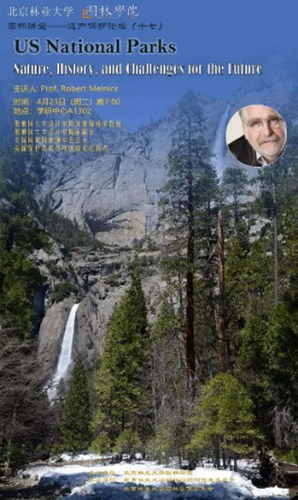
1.1Lecture
On the night of the 23rd of April 2019, the BFU community (students and lecturers) present at the conference hall A1302 of the Teaching and Scientific Research Building was honored to hear the lecture National Park-Nature, History, and Challenges for Future. This lecture is an extension of the course “World Heritage Conservation and Use” for graduate students, with supporting from graduate school. Prof. CAO Xin hosted this lecture. During the lecture, Professor Robert Z. Melnick from the University of Oregon, USA discussed about 5 key points: Defining the national aprks, history of the national parks, importance of NPs, examples of NPs and challenges of NPs.
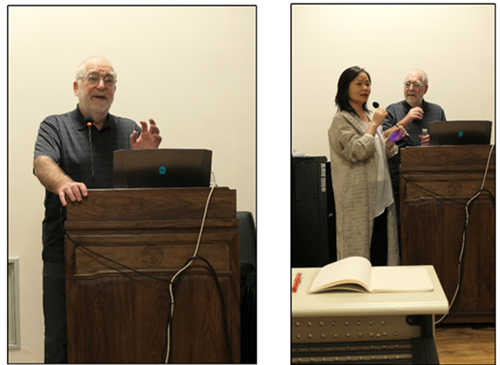
Figure 1 (Left): Prof. Robert Z. Melnick, FASLA. Cultural Landscape Research Group. University of Oregon, Eugene, OR USA gave the lecture.
Figure 2 (Right): Prof. CAO Xin, School of Landscape Architecture. Beijing Forestry University, Beijing China hosted the lecture.
NP is defined as a scenic or historically significant area of countryside protected by the federal government for the enjoyment of the general public or the preservation of the natural, scenic, and historic resources.
The history of national parks in the USA goes back to the year 1864 with the first efforts to set aside Yosemite as a state preserve. This act signed by President Abraham Lincoln was the first federal authorization to preserve scenic and scientific values for public benefit for all time. It was the basis for the concept of state and national park Systems and was later followed by other major legislations that stand as important achievements in the progress of conservation and preservation efforts in the USA.
Among the major legislations:
?1872 A bill creating Yellowstone as NP was signed into law.
?1906 the Antiquities Act was the first law to establish that archeological sites on public lands are important public resources
?1916 The Organic Act created the National Park Service
?1935 Historic Sites Act declared that it is a national policy to preserve for public use historic sites, buildings and objects of national significance for the inspiration and benefit of the people of the USA.
?1964 The Wilderness Act established the National Wilderness Preservation System and instructed federal land management agencies, including the National Park Service (NPS), to manage and preserve wilderness areas.
?1966 The National Historic Preservation Act underlined that it is the duty of the federal government to preserve the nation’s heritage.
?1970 The Environmental Law stated that it is the duty of the federal government to preserve the environment.
The legislation acknowledged the importance of protecting the nation’s natural, cultural and historical heritage, a triumph of more than a century of struggle by a grassroots movement of committed naturalists and preservationists such as:
?Frederick Law Olmsted, not only considered as the founder of American Landscape Architecture and for designing the New York City’s Central Park but also for having written important recommendations in his early writings that later became the “dual mandate” of NPs, these two recommendations were:
oIt is the duty of the government to preserve the Yosemite Valley for future generations.
oIt is the duty of the government to make sure that Yosemite Valley is accessible to the public.
?John Muir was perhaps the USA's most famous and influential naturalist. John Muir organized a camping trip with President Theodore Roosevelt which later led to an explosion of wilderness protection across the country and a push to make Yosemite a NP.
?Stephen Mather, founder and first Director of the National Park Service
?Horace Albright, Mather’s Assistant Director and later NPS Director
?Many others…
Today the USA have more than 400 sites set aside as Protected Areas (PA), Professor Robert Z. Melnick introduced some of them:
?Yosemite Valley: One of the golden parks (parks that were created even before the 1916 Organic Act was passed) became a NP in 1890 and has paved the way to the creation of more NP. Yosemite Village is the primary developed place in Yosemite Valley. It contributed enormously to the education of tourists about the places they want to visit. Its population includes NPS staff and some concession workers. Yosemite Village includes a fire station, a post office, a medical clinic, a convenience store, restaurants, gift shops and the park's headquarters facilities. Many of the hotels were housing railway constructors in the 1930s.
?Mt. Rainier NP, WA: The park faces increasing bear-human conflicts due to the improper disposal of food, trash and garbage that attract bears and make them become aggressive around people.
?Crater Lake NP, OR: With a picturesque lake at the top of the volcanic mountains.
?Saint-Gaudens National Historic Site, NH: It is an historical site and made the congress decide to give to the NPS a mandate to find as many as possible of the historical sites in the USA.
?Valley Forge National Historical Park, PA: Includes Gen. George Washington’s headquarters during an especially difficult winter of the Revolutionary War.
?Redwood NP, CA: With its redwood trees that have developed ecological wonders (full ecological ecosystems) at the top of trees.
?Buffalo National River, AR, an early designation of a Wild and Scenic River
?Cape Lookout National Seashore, NC: Threatened by climatic change that can swipe away the preserved first settlers’ dwellings.
?Denali NP and Preserve, AK: With safe and possibilities of riding a bicycle all around the park. However, this park experiences the danger of protected animals increasingly getting used to human proximity that may later increase the risk of collision with vehicles.
?Channel Islands NP, CA: With special geomorphological forms at Santa Rosa Island.
?Gettysburg National Military Park, PA: Major Civil War battle site, with cemetery, barricades, memorials and other military facilities.
?Death Valley NP, CA: With an elevation far below the sea level (-282ft/-85.5m), the park has got extreme weather that can reach 122F/50C. Death Valley is the driest, lowest and largest park in the 48 states.
?Pu’Ukohola Heiau National Historic Site: Volcanic rocks are used to build protective walls.
?Vicksburg National Military Park, MS: Preserves the site of the American Civil War Battle of Vicksburg.
?Fort Union National Monument, NM: A Civial War fort site, the impact of climate change threatens the remains of the preserved structures.
?Eugene O’Neill National Historic Site, CA: Preserves the hillside home of America's Nobel Prize-winning playwright, Eugene O'Neill.
?Cesar Chavez National Monument, CA: The property was the headquarters of the United Farm Workers (UFW) and home to Cesar Chavez from the early 1970s.
?Dry Tortugas NP, FL: In the Gulf of Mexico, the park preserves Fort Jefferson in which prisoners who had been convicted of conspiracy in the assassination of President Abraham Lincoln were jailed. The site is threatened by climatic change.
?World War II Valor in the Pacific National Monument, HI/ Pearl Harbor Historic Sites: Keeps the remains of the ship USS Arizona and is the resting place of its sailors and marines killed during the attack on Pearl Harbor by Japanese army.
?John Day Fossil Beds National Monument, OR
?Kaloko-Honokohau National Historical Park, HI: Preserves both natural and cultural heritage of ancient Hawaiians. Cultural Sites are Irreplaceable, once altered they are gone forever.
What challenges do the USA NP face?
1.275 Million visitors per year. (Cause a great threat to NPs through creating tons of trash, waste and making intentional or unintentional erosion of materials).
2.Deferred maintenance: Over $11 Billion.
3.Decreasing Staff: 27,000 for 417 units, or 65 per unit on average
4.Changing recreational patterns.
5.Increasing numbers of international visitors with increasing needs for translation into multiple languages and other necessary infrastructures in order to meet their expectations.
6.Societal pressures: Law enforcement, health and safety.
7.Fulfilling NPS dual mandate.
8.Changing contexts: political, social, physical, environmental.
9.Correcting past mistakes and missteps.
10.Insufficient data: historic, scientific, social, etc.
11.Climate change impacts.
12.Etc.
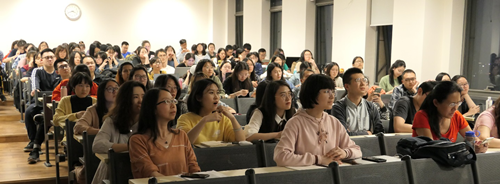
Figure 3: The audience followed attentively the lecture and showed their enthusiasm by asking many questions.
1.2 Questions and Answers
1.Why do NPS face a challenge of decreasing staff (Why are there fewer people committed to working for NPs)?
?Low salary
?People don’t have ability and NPs don’t have enough investments to educate more people.
2.Who decides what should be a NP?
?Congress decides on which sites should become NPs, but the last decision is made by the USA President.
?A long period, usually around three years, technical study is conducted to determine if a site is eligible to become a new NP.
?Congress may also be persuaded by the political pressure as many people benefit by have a neighboring NP.
?There exists a tentative list of NPs more likely to become NPs in future.
3.How do NPs do to balance to competing missions of their mandate: human enjoyment and ensure the preservation of the protected heritage?
?Rangers regularly survey the park to determine if there is damage, then study is conducted
4.Ecological corridor type (Heritage corridor).
?Ecological corridor is a functional zone of passage between several natural zones for a group of species dependent on a single environment. The example of Virginia corridor but chose to call them trails instead.
5.What is the nature of relationship between NP and local people within their borders?
?Over years there have been conflicts between local people and park rangers or species they protect but a good management of NP try to include local people into the equation and build a symbiotic relationship founded on compromises.
2 Symposium on Landscape and Heritage Conservation
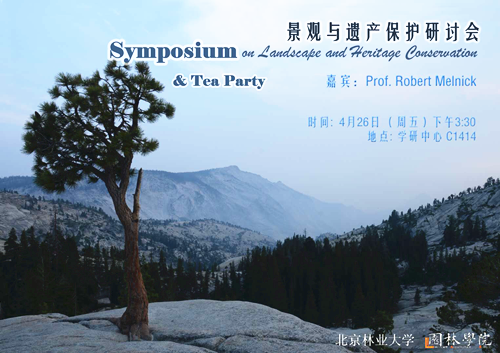
2.1 Introduction
On the afternoon of the 26th of April 2019, some staffs from other schools and Forestry Press and some graduate students present at the conference hall C1414 of the Teaching and Scientific Research Building were honored to have an open discussion with Professor Robert Z. Melnick from the University of Oregon, USA and exchanged about Landscape Architecture, Heritage Conservation, Environmental protection and many more related topics. Prof. CAO Xin hosted this symposium.
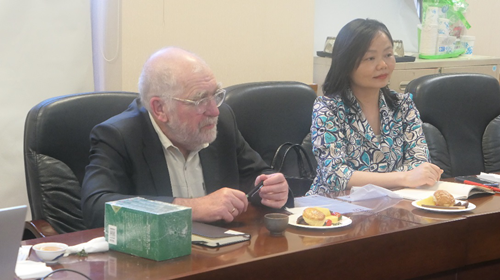
Figure 4: Professor Robert Z. Melnick (On the left) was the visiting speaker while Professor Xin CAO (On the right) hosted the symposium.
2.2 Topic discussed (Q&A):
1.Some people believe that the best management of environment challenges would be to bring humanity back to live like primitive people, because even though they didn’t invest much effort at protecting the environment, they didn’t cause considerable damage to it.
?The more we know about the universe, the more we get powerful destruction ability too, but that is not something new because people have always used the most advanced technology available. The acquired level of technology has also taught us the necessity to protect the environment and can help us to achieve that goal if we really felt the need to. It is even not true to think that primitive people didn’t destroy their environment. Recommended book: “Changes in the land” shows clearly that native Americans also caused important damages to the landscape.
?Thomas John Watson founder of IBM said: “All the world needs is two computers”. He didn’t yet understand the capacity for miniaturization of component parts. It seems that today it’s too late to bring back that discussion because people are already very much attached to their modern lifestyle and if we can’t refrain ourselves it would be more difficult to persuade others to do it.
2.Every coin has two sides. Technology has brought good and bad. What can be done to increase the positive outcome of technology over its negative side? How to get people to live a higher level of decent lifestyle towards environment?
?Education is key and it has to start by young people. Recommended a book “Fahrenheit 451” by Ray Bradbury. We have to think about what we are doing.
?Recommended works of James Cooper (One of the earliest American fiction writers).
?Recommended “Sand County Almanac” by Aldo Leopold, a must-read book for every student in Landscape Architecture.

Figure 5: Professor Robert Z. Melnick had a frank and open discussions with some members of Beijing Forestry University community (Lecturers and students).
3.People became part of nature, would it have been the reason why during the conference many of the pictures show people taking pictures?
?Yes indeed! Wildness doesn’t exist anymore, because every corner of the world is affected by influences of human activities (air pollution, global warming, etc.). Recommended “Nature is a social construct”.
4.Wild trees or redwood trees have been shown in the conference for having fascinating ecosystems on the top, but are there humans to have a complete ecosystem?
?We don’t have to think that the presence of human needs a physical presence, but his presence could be visible through people’s influence. As an example, the quality of rain that falls on the trees, dust storm that can be caused by Agriculture activities or other economic activities.
5.Why the USA had to quit many international agreements and conventions to save the planet?
?That can be attributed to some current political beliefs that put quick economic returns ahead of future generations, but that is not necessarily the view of many Americans.
6.What can we learn from the “Hudson River School”?
?James Fenimore Cooper’s writings about the pre-revolution era showed to the world that human is not the center of the universe as he focused on humans in the landscape.
?Recommended “Wilderness and American mind” by Roderick Frazier Nash, an important book about the role of wilderness and nature in the settlement of the American continent.
?Many paintings of the Rocky Mountains went to the Congress and encouraged them to decide in favor of protecting the first NPs.
?Recommended also Alan Gussow’s “The artist and the American Land”.
7.What to read about China (In English)?
?Journey to the West.
?Promised to send the list through E-mail.
8.More readings about Landscape Architecture:
?“Interpretation of ordinary landscapes,” edited by Donald Meinig
?“The past is a foreign country” by David Lowenthal, that was published by Cambridge University Press.
?1975 British Robert Macfarlane “Travel writings”.
?National Park Service for 100 years anniversary published an important document “National Park for the 20th century” it is free and is accessible online, there is also a video of NP in the 20th century.
?“Playing God in Yellowstone” by Alston Chase is a good book too.
9.What should be done to fight increasing fire in parks.
?There have been mistakes in fire management by trying to stop every single fire here and there which led to terrible fire disasters later. Bush fire has always been in nature caused by different reasons, sometimes it comes naturally such as lightning, so there is no need to rush at stopping every little fire that appears as long as it is not very sensitive.
10.How can the NP succeed to reconcile two conflicting missions suggested in their Dual mandate?
?Have always to think about the carrying capacity, looking for the future.
11.Individual/private or the government who should manage the NP?
?NPs are government property owned by people. Can however be managed by private sector but there should be serious restrictions to avoid misuse of the property.
編輯:liqing
相關閱讀
江蘇揚州:今年實施五大攻堅行動提升城市綠化
城市道路綠化增綠行動。利用今年春季綠化黃金季節,針對城市道路綠化達標率、林蔭路覆蓋率等指標,全面開展道路綠化增綠提綠補綠,重點對87條道路的行道樹“有綠無蔭、有景少蔭”、綠化品種單一等問題進行整改,形成配置合理、錯落有致、層次清晰的道路綠化景觀【詳細】
北京昌平新城東區將打造濱水商業消費新地標
昌平新城東區位于昌平區南邵鎮,規劃建設用地面積11平方公里,規劃人口12萬,圍繞打造首都北部消費新地標編織街區控規已獲批。未來,昌平新城東區將打造成為京北體驗消費示范區、山水宜居典范城區、高水平綜合服務承載區和智慧產研創新園區【詳細】
南寧園博園舉辦“禮樂園博·南寧花朝盛典”
活動期間,南寧園博園還舉辦了漢服新秀大賽、同袍巡游、及笄成人禮、國風婚禮妝照展示、明制婚禮儀式典禮、六藝游園、書畫體驗、國風集市等精彩紛呈的活動,同時邀請眾多知名國風模特參與表演展示【詳細】
成都首屆“最美公園”評選結果出爐
據成都市公園城市建設管理局相關負責人介紹,本次“最美公園”評選范圍包括23個區(市)縣已建成開放的1514個公園,包括綜合公園、口袋公園,還有郊野公園【詳細】
